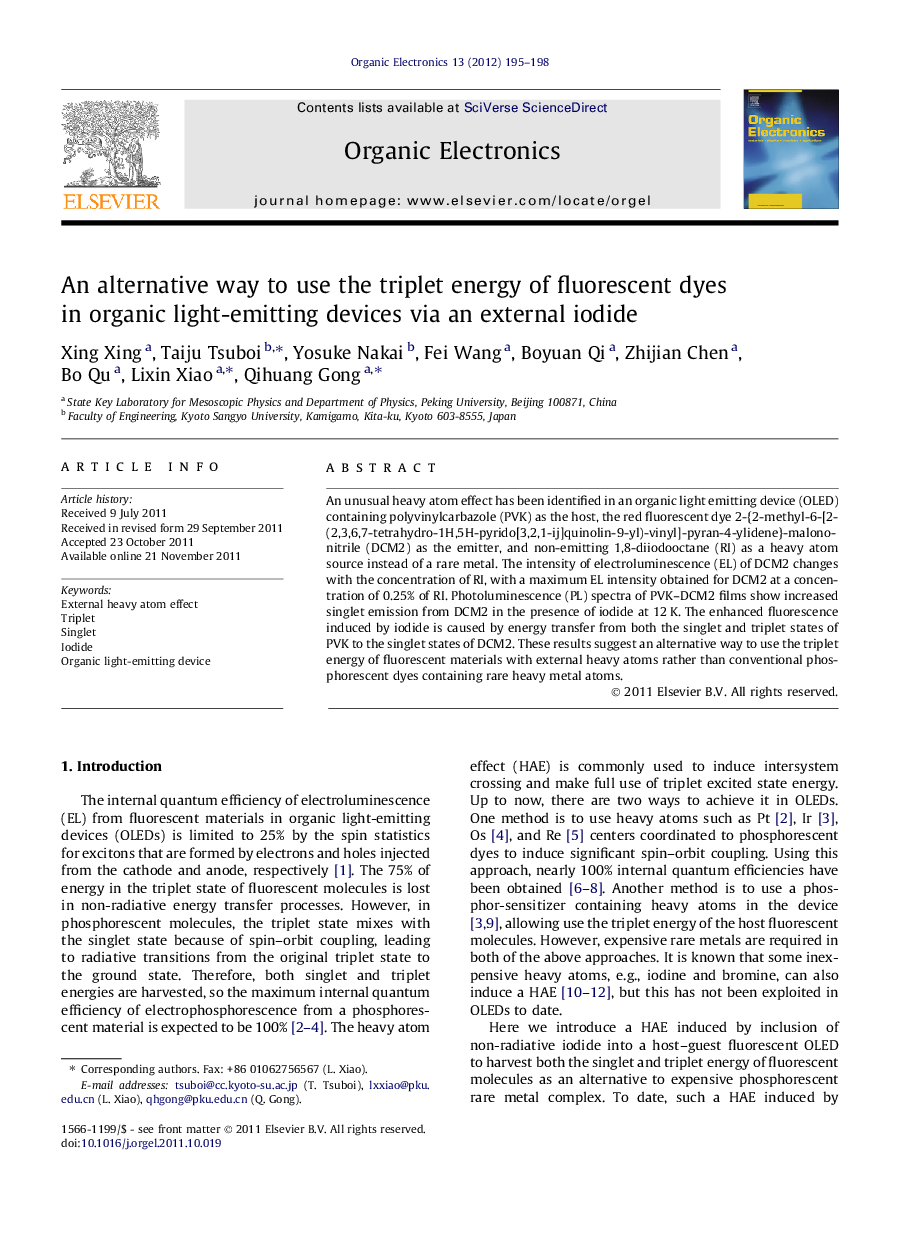| کد مقاله | کد نشریه | سال انتشار | مقاله انگلیسی | نسخه تمام متن |
|---|---|---|---|---|
| 1264643 | 972164 | 2012 | 4 صفحه PDF | دانلود رایگان |

An unusual heavy atom effect has been identified in an organic light emitting device (OLED) containing polyvinylcarbazole (PVK) as the host, the red fluorescent dye 2-{2-methyl-6-[2-(2,3,6,7-tetrahydro-1H,5H-pyrido[3,2,1-ij]quinolin-9-yl)-vinyl]-pyran-4-ylidene}-malononitrile (DCM2) as the emitter, and non-emitting 1,8-diiodooctane (RI) as a heavy atom source instead of a rare metal. The intensity of electroluminescence (EL) of DCM2 changes with the concentration of RI, with a maximum EL intensity obtained for DCM2 at a concentration of 0.25% of RI. Photoluminescence (PL) spectra of PVK–DCM2 films show increased singlet emission from DCM2 in the presence of iodide at 12 K. The enhanced fluorescence induced by iodide is caused by energy transfer from both the singlet and triplet states of PVK to the singlet states of DCM2. These results suggest an alternative way to use the triplet energy of fluorescent materials with external heavy atoms rather than conventional phosphorescent dyes containing rare heavy metal atoms.
Figure optionsDownload as PowerPoint slideHighlights
► Non-radiative 1,8-diiodooctane acts as a heavy atom source instead of a rare metal.
► The enhanced electroluminescence and photoluminescence is induced by iodide.
► Energy transfers directly from the triplet states of PVK to the singlet states of DCM2.
► Triplet energy of fluorescent materials can be used via external heavy atoms.
Journal: Organic Electronics - Volume 13, Issue 1, January 2012, Pages 195–198